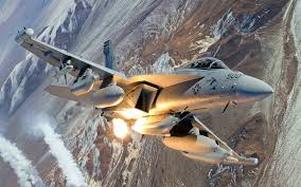
November 28, 2014
According to recent articles in Truthout and the Tacoma News Tribune, the US Navy plans to intensify its Northwest Electromagnetic Radiation Warfare training program in Military Operations Areas (MOA) over the Olympic National Forest, where as early as September of next year it will operate 36 of its EA-18G "Growler" supersonic electronic attack aircraft as low as 1,200 feet in order to conduct war games with mobile electromagnetic radiation emitter towers, transmitting from 15 permanent sites. While the jury might still out on the possible damage to wildlife in the area from ECM emissions, continuous electromagnetic radiation has definitely been linked to various cancers in humans, particularly children.
The area in question is the Olympic Peninsula, including the Olympic National Park and Olympic National Forest, as well as cities and communities, for 260 days per year, with exercises lasting up to 16 hours per day. The damage to flora and fauna in Washington State could be monumental and precedent setting. With so much at stake, the Navy has provided almost no advance notification to local Peninsula communities, with only one joint Navy/Forest Service and community meeting in Forks being held so far. The USN and USFS notifications had only appeared in Seattle and Aberdeen newspapers, weeks before the communities most impacted - Port Angeles, Forks, Pacific Beach - had any clue, nearly missing the USFS deadline for comments, extended only recently until November 28. Another meeting with Navy and USFS reps is scheduled for November 19 at Pacific Beach.
I am not an alarmist, but I was trained as an Airborne Electronic Warfare Officer in 1970 and was familiar then with the potential environmental damage these training routes could cause. While the Military Operations Area (MOA) over the Olympic Peninsula has been used for years for readiness training, the Navy's recent Environmental Assessment of this EA18G version is sorely lacking new science regarding possible adverse effects on flora and fauna, with most data at least five years old. Noticeably missing also is adequate information for USFS decision makers to consider regarding daily low-level flights of the noisiest, most polluting aircraft in the Navy inventory. At a minimum the Navy assessment, which also lists alternative locations, cries out for an independent Environmental Impact Statement before the USFS is allowed to unleash these electromagnetic war games on steroids on the Northwest's most pristine wilderness.